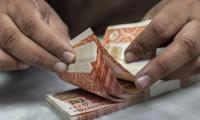Sustained by a continued flow of foreign funding, the development sector in Pakistan could not effect locally-informed social change. While this is true for most foreign aid-dependent developing nations, Pakistan is ranked as one of the worst performing countries in terms of human development in comparison to other middle and low-income states in the world.
Measured against a wide range of quantifiable human development indicators, Pakistan has shown a steady decline over the years. Today, Pakistan lags behind countries like Bangladesh and Nepal as far as the human development index (HDI) is concerned. HDI is an internationally-recognised, multi-faceted deprivation assessment tool to gauge the comparative progress of countries in attaining globally-defined human development milestones.
HDI may not fully represent the contextual variances of the development trajectories of countries on a long-term basis, it, nonetheless, provides a good comparison of contemporary trends of the socioeconomic situation of various regions and states.
According to the recently published UN Human Development Report, Pakistan stands at 147th position out of 188 countries surveyed for human development ranking in 2016-17. This means Pakistan has not performed well in 2016-17 and its human development ranking has gone down a notch from its 205-16 position. With the exclusion of the war-torn Afghanistan, Pakistan ranks in the lowest position among its South Asian neighbours. This includes India (131), Bangladesh (139) Bhutan (132) Nepal (141) and Sri Lanka (73).
Pakistan has made no improvements in its ranking over the previous year on its HDI score. Its position in 2014 and 2015 was 148 and 146, respectively. According to the latest annual report of the UN Development Programme – Human Development Report 2016 – 63 percent of Pakistanis have shown some satisfaction with their standard of living in 2014-15. This has declined further in 2016 according to the findings of a dozen of sample-based surveys conducted by development organisations recently.
The Human Development Report and subsequent surveys conducted recently call for legislation to promote gender equality for women in the country. The key focus of these studies is to urge the government to formalise the violence against women as a punishable crime. These reports advocate the declaration of acid attacks against women as a heinous crime and the worst form of violence with a palpable punishment. Violence against women is common in all those communities where patriarchal gender orders are used to justify violence against women.
According to these surveys, more than 3,300 acid-throwing attacks had been recorded in Pakistan, Bangladesh, Colombia and Uganda in the last 15 years. The introduction of legislation and a suitable mechanism for speedy justice coupled with the execution of penal court orders in a timely manner will help reduce violence against women. In addition to the government’s role, the development sector must also come forward to play its role through long-term and substantial programmes.
In recent times, one of the tools to assess women’s economic empowerment that are used by development agencies has been the provision of microcredit loans to women. The putative logic of economic empowerment is predicated upon allowing women access to not only easy credit but also facilitating them to manage and control the utilisation of these loans. Microfinance institutions in countries like Pakistan and Bangladesh have dramatically increased the credit facilities to poor rural women since the mid-1980s. Although this is intended to contribute to women’s empowerment, there no substantial research-based evidence of a correlation between microcredit and women’s empowerment.
There are anecdotal, agency-driven and promotional videos to provide a rationale for microcredit loans. However, there are no serious evaluations of loan use to investigate whether women have control over the decision-making involved in credit allocations. Intra-household power imbalances in our patriarchal system have not been explored at the design stage of microcredit programmes. The continued high demand for loans among women and their manifestly high propensity to repay is taken as a proxy indicator for control and empowerment.
We must question the assumption by exploring variations in the degree to which women borrowers control their loans directly. There have been some serious but limited researches in South America in recent times which suggest that a significant proportion of a woman’s loans are invariably controlled by her male relatives. These studies also indicate the project-driven nature of microcredit loan, which strongly reflect the bias of implementing agencies. Most of these project-driven approaches are preoccupied with “credit performance” – measured primarily in terms of high repayment rates. Credit payment and recovery ratio is directly proportional to the incentives of fieldworkers. There is little or no concern about women gaining meaningful control over their investment activities.
There are larger NGOs that have done well in eradicating poverty and ensuring empowerment through integrated rural development programmes. These integrated rural development programmes are aligned with sustainable development goals (SDGs). There are visible results against the first goal of SDGs, which is predicated upon the commitments of governments across the world to eradicate poverty in all its manifestations of inclusivity and integration over the next 15 years. Inclusive poverty eradication means that all people – including women, children and other disadvantaged groups – have adequate wherewithal to enjoy a basic standard of living. This basic standard of living includes access to social protection, education, health, financial services and shelter for the poor and vulnerable groups. This is also about addressing the vulnerabilities caused by natural disasters and human-induced conflicts.
The international poverty line is currently measured as $1.90 dollars per person per day on purchasing power parity (PPP). There are conflicting claims about the decline of poverty during the past two decades. The proponents of economic growth view it as a means of poverty alleviation and claim that the proportion of the global population living below the poverty line dropped by half – from 26 percent to 13 percent during the past 15 years. They extrapolate the results through the econometric measures of trickledown effects of economic growth.
If growth benefits all income groups equally, poverty in Pakistan may decline by five percent in 2030. However, there is little evidence of this correlation of poverty alleviation and economic growth without distributional justice in the political system. The model of integrated rural development adopted by RSPs has provided some semblance of an alternative micro-level solution to empower communities and demand distributional justice. This calls for local initiatives in that the poor people have their own organisation to facilitate their access to the benefits of economic growth. The success of this community-based model of local development hinges on the effectiveness of local institutions to ensure the participation of the poor and vulnerable segments of society.
There are livelihood and social protection approaches adopted by RSPs that have been instrumental in reducing poverty. These approaches entail improving the coverage of social protection programmes and targeting benefits to the poor and most vulnerable segments of society. Sustainable livelihood development programmes entail asset transfer, community investment funds, entrepreurship development, skill development, value-chain development and an access to the market to address the economic dimension of poverty.
Social protection programmes include social assistance, such as cash transfers, school feeding and targeted food assistance. Social insurance and labour market programmes are other forms of social protection and cover old-age and disability pensions, maternity benefits, unemployment insurance, skills training and wage subsidies, among other things. Most poor people remain outside social protection systems, especially in poorer countries. About one in five people receive any forms of benefit in low-income countries as compared with two in three in upper middle-income countries.
All these approaches will work only if our policymakers show a commitment to create an enabling policy environment for social investments. Pakistan has seen a sharp decline in social investments in recent years. The bulk of social development resources have gone into serving the misplaced development priorities of monumental mega projects.
The writer is a freelance columnist based in Islamabad.
Email: ahnihal@yahoo.com
An aeroplane of the national flag carrier of Pakistan is seen in this file photo. — AFPWhile Pakistan considers...
Representational image of a graph depicting various variables. — APP/FileInitiated by the centre and fiercely...
In this picture taken on April 16, 2023, people throng a market area during shopping in Lahore. — AFPOne of the...
Honour crimes also target men. In Sikandar Ali Lashari vs The State, SHC upheld conviction passed by ATC for honour...
If Sindh earmarks Rs20 million per police station, it will cost only Rs10 billion to make them effective first...
A complex and difficult policy environment seems to be highlighted by US’s recent application of sanctions on...







